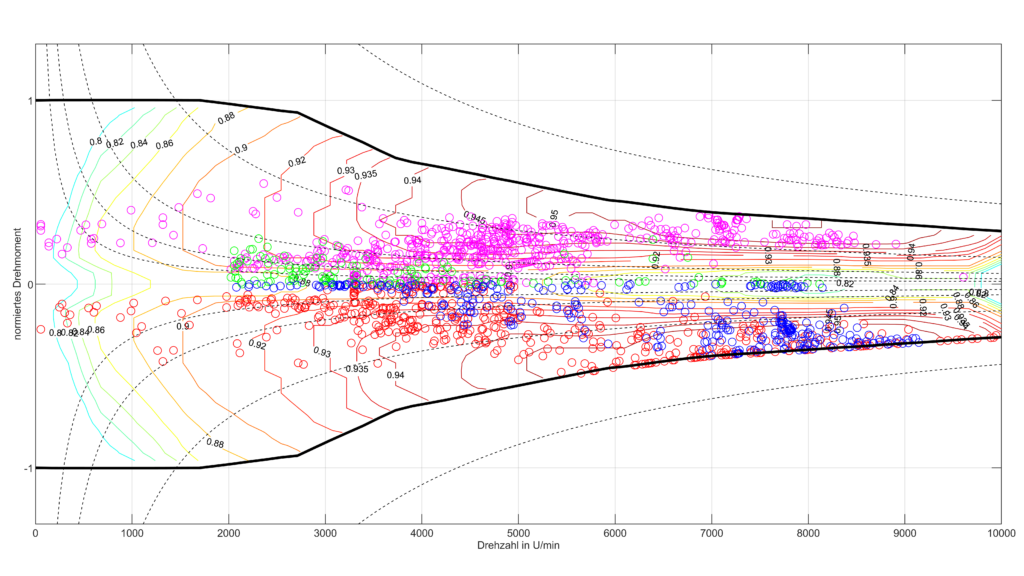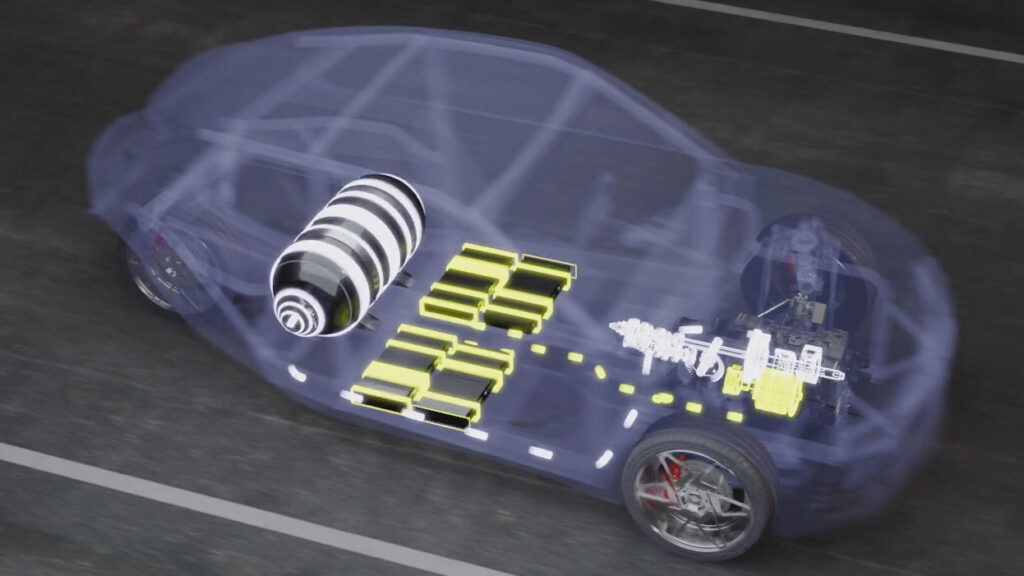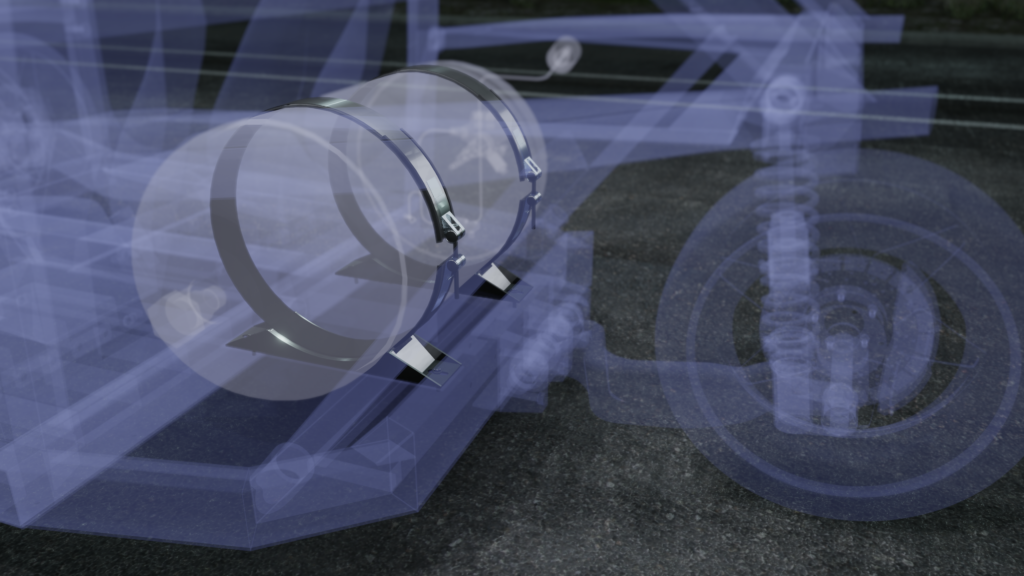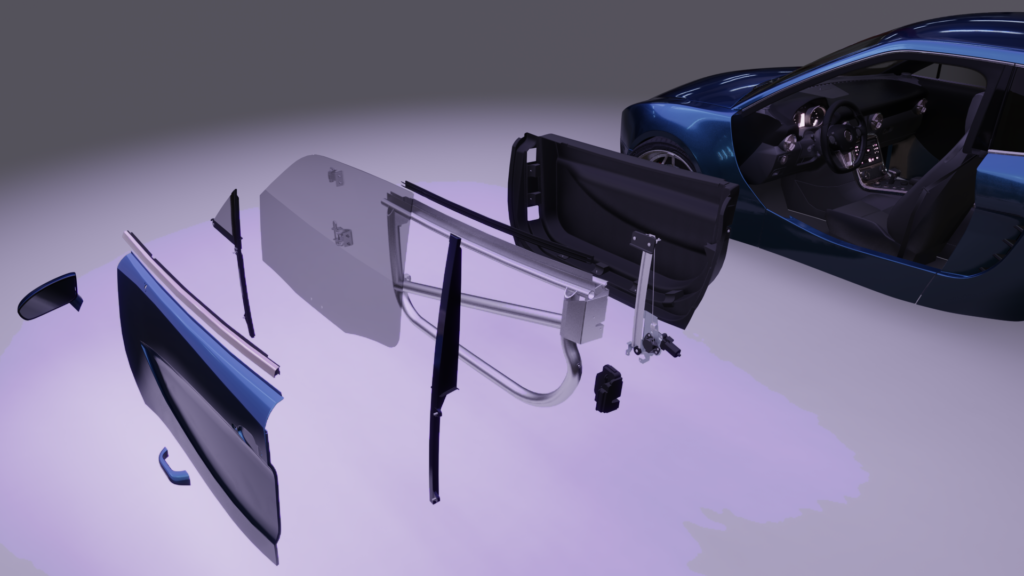We pursue the clear goal of enabling sustainable mobility for all vehicles - regardless of whether they are industrial solutions or individual mobility. The core component here is the hybrid hydrogen-powered powertrain.
Power Unit
Our power unit is essentially composed of the hydrogen combustion engine and an electric machine.
The combustion engine is a particularly lightweight rotary piston engine with direct injection. It is particularly well suited for the combustion of hydrogen. As you can read in our hydrogen section, hydrogen combustion does not produce any CO₂ emissions. The main emitter is climate-neutral water vapor! Depending on the operating situation, nitrogen oxides produced are minimized by special catalysts and our operating strategy.
Depending on the individual operating situation, the electric machine can be used as an efficient generator, but also as a high-torque prime mover. This enables the different driving modes shown in our animation. The torques are finally transmitted by an automated manual transmission to the drive axle and thus to the road.

Operating strategy
The operating strategy for the power unit was developed at the Technical University of Darmstadt. It ensures optimal utilisation of the potentials of the hydrogen combustion engine, e-machine and energy storage units with regard to consumption and emission behaviour.
Start-up can be handled by the electric motor alone. The combustion engine can initially remain switched off. This means that no valuable energy is converted into unused heat in the starting clutch, as is the case with conventional vehicles. Once a certain speed is reached, the combustion engine is switched on.
Here, the hydrogen combustion engine is primarily used as the prime mover. Depending on the current state of charge of the battery, the stored efficiency maps of the components, and the driver's wishes, the operating strategy varies the use of the electric motor between the two cases of "charging" and "boosting".
- When "supercharging" , the electric machine is used as a generator and is additionally powered by the hydrogen combustion engine. The battery is charged. The combustion engine is thus operated at higher efficiency operating points.
- When "boosting" , the power of both engines can be added for a short time. The electric motor is thus used as an additional motor and supports the combustion engine. The battery is discharged.
With recuperative braking, the electric machine is used as a regenerative brake. The energy converted into unused heat in the brakes of conventional vehicles is thus used to charge the battery. In this way, it can be reused during the subsequent electric start-up or "boosting". Above a certain level of braking required by the driver, the mechanical brakes on the wheels are resorted to. Basically, there is a firm mechanical/hydraulic connection between the brake pedal and the mechanical brake at all times. All this is made possible by an efficient electromechanical brake booster.

Energy storage
Other central components are the various energy storage units integrated in the vehicle.
The main storage unit is the high-pressure hydrogen tank. This meets the highest safety standards and holds enough hydrogen for a range of 200 to 250 miles. It can be filled in around three minutes at a hydrogen filling station using the conventional system. This ensures the usual convenience and spares our customers the long waiting times that are common with purely electric vehicles.
The second storage unit is a compact 48V LTO battery integrated in the vehicle floor. It serves only as a temporary energy buffer. LTO (lithium titanate oxide) is a battery cell technology that enables maximum charge/discharge rates with the lowest capacities and greatest robustness. It is therefore ideally suited for our system. Compared to a purely battery-electric small vehicle, our battery ultimately comprises far less than 1/20th of the size. We thus remain true to our guiding principle of a lightweight vehicle optimized in terms of sustainability.

Wasserstoffbordnetz
From the high-pressure tank to the power unit, the hydrogen is transported through our on-board network of high-pressure lines, valves and regulators.
Special safety devices - so-called TPRDs (thermal pressure relief devices) - are provided in the vehicle for this purpose. These are highly reliable components from the general hydrogen industry that have been tried and tested over a very long time. In the event of an accident or unforeseen system condition, they ensure that the hydrogen is safely blown out of the vehicle. Due to the excellent diffusion properties of hydrogen, it is thus easy to guarantee in an emergency that no flammable substance will be left in the vicinity of the vehicle within fractions of a second. Contrary to the frequently negative preconceptions about hydrogen vehicles, the technology described does not pose any increased risks to occupants today.

Chassis
For a possible design of vehicle chassis, we rely on the robust and, due to its good recyclability, sustainable material steel. Thanks to the simple but meticulously optimised frame geometry with regard to load compliance, we can use low cross-sectional thicknesses. This makes it possible to create a lightweight structure that is favourable in terms of production technology and at the same time meets high safety standards.